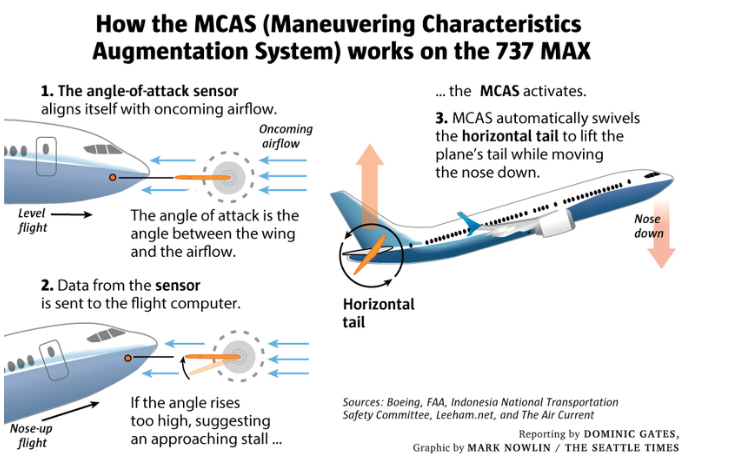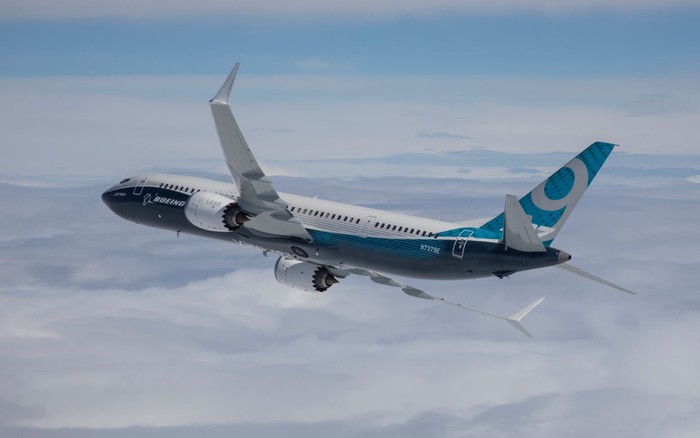The ‘Boeing 737-Max’
October 21, 2019

It’s going to be a while before you see the Boeing 737-Max flying above these New York skies- or any airspace within the United States, for that matter. The Boeing 737-Max line of narrow-body, medium-haul airlines have been prohibited from flying by the Federal Aviation Administration since March of last year. The airliners have also been effectively grounded by several other countries, including Canada, Australia, France, and China. Experts suggest that the Boeing 737-Max will continue to be grounded through Thanksgiving, and potentially even longer, raising questions about both the jet’s safety and the certification measures in place to ensure the safety of the public.
In order to better understand the issue with the 737-Max, one must first understand what systems and physical components are in place on the aircraft, ultimately resulting in a catastrophic issue which claimed the lives of over three hundred people just six months ago.
When the 737-Max first came into production, engineers were faced with a predicament. Engineers made the decision not to create a new aircraft design, but rather, redesign the engines and place those engines on an older design for an aircraft known as the 737-300. Curiously, during the design process, engineers failed to account for the size of the larger engines they had recently purchased in relation to the body of the 737-300.
Aerodynamics stipulate that the larger the engine, the greater the “pitch up angle.” Normally, engines are placed below the wing in order to reduce this “pitching up motion.” Since the engines did not fit under the wing on the older design, they were moved closer to the 737-Max’s leading wing-edge. This, in turn, resulted in a drastic nose-up attitude at lower speeds needed for takeoff and landing. To fix the issue, software engineers implemented a software fix through a system named “MCAS,” or Maneuvering Characteristics Augmentation System. The software behind MCAS was designed to automatically adjust the elevators on the aircraft’s tail. During takeoff, when the larger engines created a drastic “nose-up attitude,” the software would automatically adjust the elevators to control the pitch, resulting in a proper angle-of-attack. Unbeknownst to the engineers, this software “system” gave pilots a false sense of control and security. As it turns out, most pilots received only two hours of training in pertinence to MCAS- training, which, in most cases, consisted of a simple class taken on a tablet. MCAS worked successfully for several months on the 737-Max planes, which carried over 80,000 passengers over the time period.

Then, in a stunning twist, two crashes occurred just months apart- the crash of LionAir 610 occuring on October 29, 2018, and the crash of Ethopian 302 taking place on March 10, 2019. The crashes, ultimately investigated by the National Transportation Safety Board (NTSB) determined that the MCAS system malfunctioned on takeoff, commanding the plane’s elevators too far, resulting in a steep nose-down attitude. This attitude, both a result of poor pilot training and the physical design of the MCAS override switch played a role in the inability of pilots to save their planes from impending doom. The cockpit voice recorder (CVR) from LionAir flight 610 revealed that the pilots never knew MCAS existed. Several other pilots from different airlines were also “left out of the loop.”
New evidence revealed Friday reveals that Boeing engineers and test pilots identified, but ultimately failed to solve an issue pertaining to the plane’s MCAS system. In text messages independently verified by NBC News, a chief test pilot for boeing stated, “I’m leveling off at like 4000 ft, 230 knots and the plane is still trimming itself like crazy.” If these messages prove credible, the Boeing 737-Max may never fly again. Even if it does, many passengers state that would not fly on an airline operating the 737-max, fearing they could be the next innocent victim of the Boeing 737-Max. (For more information, visit NBC News HERE)
